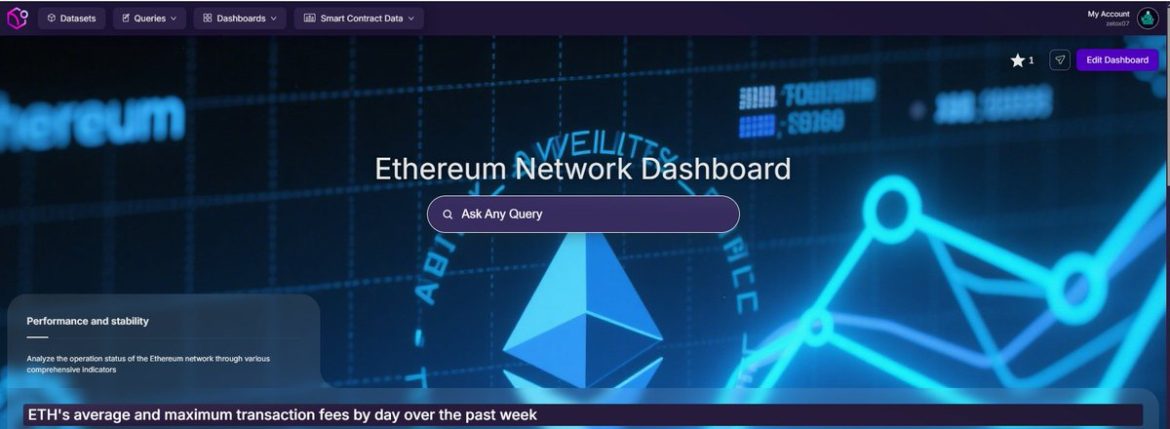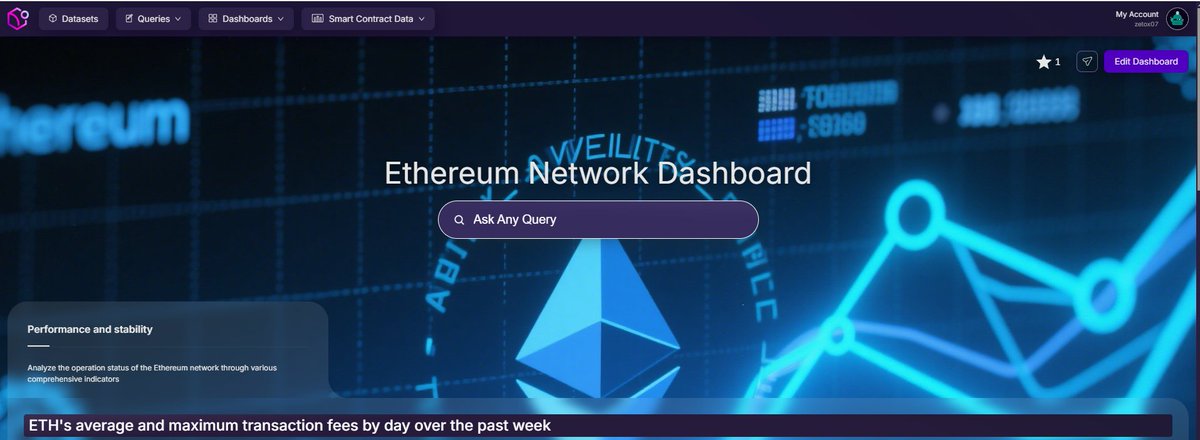Ethereum Network Analysis: A Dashboard Deep Dive
Hooking the Reader: A Tale of Two Networks
Imagine two cities, both bustling with activity, yet each with its unique character and challenges. One is Ethereum, the long-standing metropolis, a hub of innovation and decentralization. The other is the broader blockchain landscape, a sprawling urban area where new cities (networks) emerge daily, each vying for attention and resources. This report is our guidebook, delving into Ethereum’s recent status using a comprehensive dashboard as our lens.
Introducing Our Tool: The Ethereum Network Dashboard
Crafted by the savvy @zetox998, our dashboard offers a user-friendly interface to analyze Ethereum’s mainnet. It displays a range of metrics, from gas prices to active addresses, providing insights into the network’s health and performance.
Exploring Ethereum’s Vital Signs
Gas Price & Gas Used: The Cost of Doing Business
Gas price and gas used are like the rent and utilities of Ethereum’s city. High gas prices indicate increased competition among transactions, while high gas used signals heavy network activity.
As of April 21, 2025, Ethereum’s average gas price was 20.5 Gwei, with a gas used rate of 15,000,000,000 [1]. These figures suggest a busy network with users willing to pay a premium for quick transaction processing. However, they also hint at potential congestion and the need for scalability solutions.
Block Time & Transaction Count: The Pulse of the City
Block time and transaction count are Ethereum’s heartbeat, measuring its processing speed and capacity. A lower block time and higher transaction count signify a more efficient network.
Currently, Ethereum’s average block time is around 13.5 seconds, with a transaction count of approximately 1,200,000 per day [1]. These figures demonstrate Ethereum’s capability to handle a substantial number of transactions swiftly. Yet, they also reveal room for improvement, as other networks like Solana boast faster block times and higher transaction throughput.
Active Addresses: The City’s Engaged Residents
The number of active addresses provides insights into user engagement and network adoption. A rising trend indicates growing interest and usage of the network.
As of April 21, 2025, Ethereum has around 1,500,000 active addresses [1], reflecting a robust and engaged user base. This figure is a testament to Ethereum’s enduring popularity and its role as a hub for decentralized applications (dApps) and smart contracts.
Recent News & Developments: The City’s Headlines
OpenAI’s Image Geolocation: A Privacy Concern
OpenAI has unveiled new models (o3 and o4-mini) that can analyze images to identify cities, venues, and specific buildings with high accuracy [2]. While this technology offers exciting possibilities, it also raises privacy concerns, especially in the context of blockchain and cryptocurrency users who value anonymity. As Ethereum continues to grow, so does the need for robust privacy measures.
Solana’s Market Cap Surpasses Airbnb: The New Kid on the Block
On April 21, 2025, Solana’s market capitalization surpassed that of Airbnb, reaching $72.7 billion compared to Airbnb’s $70 billion [3]. This milestone highlights the growing influence and investor confidence in the Solana network. It also serves as a reminder of the competitive nature of the blockchain space and the potential for new networks to challenge Ethereum’s dominance.
Ethereum’s Average Gas Price: A Rollercoaster Ride
Ethereum’s average gas price has been volatile, fluctuating between 10 and 30 Gwei in recent months [1]. This volatility reflects the network’s dynamic nature and the impact of factors such as network congestion, user demand, and market sentiment. It also underscores the need for scalability solutions to stabilize gas prices and reduce transaction costs.
Conclusion: Ethereum’s Ever-Evolving Landscape
Ethereum’s dashboard metrics and recent news paint a picture of a thriving, albeit complex, network. As we navigate the blockchain landscape, it’s crucial to monitor these indicators to understand Ethereum’s performance and potential future developments.
The recent advancements in image geolocation technology remind us of the importance of privacy and security in blockchain networks. Meanwhile, Solana’s market cap milestone underscores the competitive nature of the blockchain space and the potential for growth and innovation.
As we continue to explore and analyze the Ethereum network, let’s remain adaptable and open to the ever-evolving landscape of blockchain technology. After all, in the city of Ethereum, change is the only constant.
Sources
[1] Ethereum Network Dashboard by @zetox998
[2] OpenAI’s Image Geolocation on Twitter
[3] Solana’s Market Cap on Twitter





